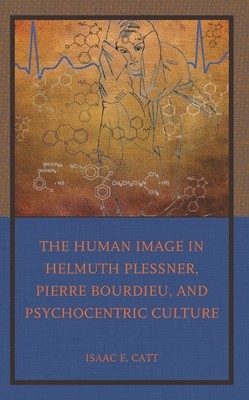
- We will send in 10–14 business days.
- Author: Isaac E Catt
- Publisher: Lexington Books
- ISBN-10: 1666918555
- ISBN-13: 9781666918557
- Format: 15.2 x 22.9 x 1.8 cm, hardcover
- Language: English
- SAVE -10% with code: EXTRA
The Human Image in Helmuth Plessner, Pierre Bourdieu, and Psychocentric Culture (e-book) (used book) | bookbook.eu
Reviews
Description
In The Human Image in Helmuth Plessner, Pierre Bourdieu, and Psychocentric Culture, Isaac E. Catt offers a unique criticism of naturalistic reductions of humans to animals, to neuro substrates and to DNA. Catt explores a new interpretation of Plessner and Bourdieu, revealing the combinatory logic of semiotic phenomenology in both and their common problematic of communication. Through an emergent synthesis of philosophical anthropology and communicology, this book provides a basis for criticism of the failed mechanistic medical model in psychiatry, a fresh argument for reconceptualizing psychiatry as a human science, and for construction of a new ecological image of communicative being. Throughout the book, alternative attempts to transcend dualisms such as cybernetics, anti-anthropocentrism, and biosemiotics are revealed to risk reification of the very objects of their analysis. Scholars of communication, semiotics, philosophy, psychiatry, cultural studies, mental distress, and psychology will find this book of particular interest.
EXTRA 10 % discount with code: EXTRA
The promotion ends in 19d.13:21:33
The discount code is valid when purchasing from 10 €. Discounts do not stack.
- Author: Isaac E Catt
- Publisher: Lexington Books
- ISBN-10: 1666918555
- ISBN-13: 9781666918557
- Format: 15.2 x 22.9 x 1.8 cm, hardcover
- Language: English English
In The Human Image in Helmuth Plessner, Pierre Bourdieu, and Psychocentric Culture, Isaac E. Catt offers a unique criticism of naturalistic reductions of humans to animals, to neuro substrates and to DNA. Catt explores a new interpretation of Plessner and Bourdieu, revealing the combinatory logic of semiotic phenomenology in both and their common problematic of communication. Through an emergent synthesis of philosophical anthropology and communicology, this book provides a basis for criticism of the failed mechanistic medical model in psychiatry, a fresh argument for reconceptualizing psychiatry as a human science, and for construction of a new ecological image of communicative being. Throughout the book, alternative attempts to transcend dualisms such as cybernetics, anti-anthropocentrism, and biosemiotics are revealed to risk reification of the very objects of their analysis. Scholars of communication, semiotics, philosophy, psychiatry, cultural studies, mental distress, and psychology will find this book of particular interest.


Reviews